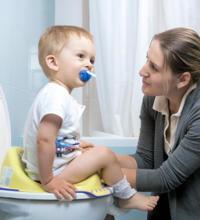Pneumonia: The Top 10 Questions
1 How Do You Get Pneumonia?
Pneumonia is an acute infection that affects the lungs. It is usually a mild disease; however, it can also become very dangerous. There are several types of germs which can infect the lungs and cause pneumonia. Bacterial infections, viruses, fungal infection, and parasites can cause the development of pneumonia.
People can get pneumonia in different ways such as inhaling virus or bacteria, temporary hospital admission, living in a care facility for a long time, or breathing in foreign objects. Most often, the cause of pneumonia is due to a person inhaling a bacteria or virus. If the immune system cannot fight off these microorganisms, they will begin to grow in the air sacs of the lungs. As a result, the immune system attempts to remove the infection by increasing the white blood cells. Then, the lungs will be filled up with fluid and pus thus, leading to lung infection.
Patients who have stayed longer in the hospital can develop hospital acquired pneumonia especially in areas where patients are kept closely together. The bacteria that cause this kind of pneumonia may be of a stronger nature and less susceptible to antibiotics. People who live in care facilities, retirement homes, or spend extended periods of times in dialysis centers are at an increased risk of getting pneumonia.
2 Is Pneumonia Contagious?
The usual cause of pneumonia is catching the germs that cause it. Thus, pneumonia is contagious. However, pneumonia that is caused by chemical fumes or other poisons that are not made by infectious agents is not contagious.
People can catch the pneumonia-causing germs in the most common of places as well as the environment they frequently go on a daily basis. This can contribute to how at-risk people are to the condition. For example, young children who are in daycare or school facilities can catch the viruses easily from one another, which makes them more susceptible to viral pneumonia.
Pneumonia becomes contagious when the viruses or bacteria are expelled through infected droplets that are coughed out by an infected person. The expelled droplets enclose the virus or bacteria that cause the pneumonia. These droplets then contaminate the breathing tract or mouth of another person and eventually infect the lungs. The exact time when pneumonia becomes a contagious infection varies on the cause and may range from 1 to 2 days or weeks. Generally, viral pneumonia is more contagious compared to bacterial and fungal pneumonia. This is because viruses will more commonly spread from one person to another person. Meanwhile, certain forms of pneumonia are contagious only in specific environments. Pneumonia has also been linked to breathing in droplets from fountains, whirlpools, or spas.
3 How Long Does Pneumonia Last?
It takes a certain amount of time before people start to feel sick after being exposed to an infectious agent. This length of time is known as the “incubation period” and it depends on many things, particularly which bug is causing the disease.
For example, people with influenza pneumonia may become sick as soon as 12 hours or as long as 3 days after they are exposed to the flu virus. On the other hand, people with walking pneumonia may not display any symptoms until 2 to 3 weeks after becoming infected.
There are some factors that can affect the duration of pneumonia. These include the state of the individual’s immune system, age, health, the cause of the disease, and how soon the illness is treated.
Healthy people usually do not have any difficulty recovering from pneumonia. However, the recovery process will take longer for elderly patients and those who are struggling with poor health. Most types of pneumonia clear up within a week or two, though a cough may remain for several weeks more. In severe cases, pneumonia may take longer to completely recover.
4 Can the Elderly Recover from Pneumonia?
The elderly are more at risk of pneumonia than younger individuals. The incidence of both disability and co-morbid conditions increase with age and are associated with increased risk of pneumonia. Thus, the elderly represents a growing percentage of those at risk.
The risk of having pneumonia for an elderly individual is much greater if they often suffer from chronic disease or weakened immune system. They will also have a more difficult time recuperating. Pneumonia can go unrecognized as the elderly can be asymptomatic because of other medical problems or age-related changes in the lungs. The elderly population is often used to feeling unwell and may not report symptoms to their doctors.
The chances of older adults fully recovering from pneumonia are lower compared to the younger population. Even seniors who were able to recuperate have a higher chance of dying over the next several years. Pneumonia continues to be one of the main causes of hospitalization and death for elderly people. Thus, the prevention of pneumonia in the elderly must always be a main concern amongst family members and long-term care providers.
5 What Is the Pneumonia Prognosis?
Most cases of pneumonia have excellent prognosis. An individual who is infected with pneumonia usually starts to see improvements in their condition 3 to 5 days after antibiotic treatment. Improvements can be defined as having fewer symptoms or feeling better. Most people are able to carry on their normal activities within 7 days. However, patients treated while in the hospital can require up to 3 weeks or more before they can go back to their normal activities.
People with pneumonia, whether they are treated at home or in the hospital, must take special care of themselves during the recovery process. This includes getting sufficient rest and drinking fluids to prevent dehydration. There is no particular amount of fluid that is suggested but feeling thirsty is a good sign that you need to consume more fluids. Patients must take all doses of the antibiotic medication that is prescribed to them. Missing doses can eventually cause the antibiotics to stop working. Thus, even if the patient is feeling better after a few days on the medication, they cannot cease the dose early.
Patients being treated at home must have a follow-up appointment with their healthcare provider several days following the diagnosis of pneumonia. This will determine whether the patient is feeling better and better assess if there are any complications of the pneumonia that have developed. Also, individuals who have been released from the hospital should schedule a follow-up appointment, usually within 1 week.
6 Is Pneumonia Contagious to Babies?
Pneumonia is contagious in babies just as it is contagious in adults; this is because a baby’s immune system is not yet fully developed. However, there is a preventative technique mothers can use that will help: breastfeeding. Breastfeeding allows the mother to pass on antigens to her infant in breast milk. These will then assist in fighting off viruses and bacteria by inducing a positive immune response in the infant. Usually, babies get a milder form of pneumonia called “walking pneumonia.” Unlike adults, young children who have pneumonia may not display a fever or a nagging cough and may show signs of infection that are far subtler. While infants and newborns may not display typical signs of pneumonia infection at all.
It can also be difficult to identify if a child has pneumonia because they may be unable to voice how they are feeling as well as an older child can.
The following symptoms may indicate that an infant or child has pneumonia:
- Being limp or lethargic
- Looking pale
- Feeding poorly
- Crying more than usual
- Vomiting
- Being irritable or restless
The only way to accurately diagnose if a child or infant has pneumonia is to consult a doctor.
7 What Is a Double Pneumonia?
Double pneumonia occurs when the infection has affected both lungs. It is a lung infection which can be caused by viruses, parasites, bacteria, or fungi. It's common for pneumonia to affect both lungs, so don't worry if the physician says this is your diagnosis — it doesn't mean you're twice as sick. However, double pneumonia can be life-threatening if left untreated.
People with double pneumonia could develop a number of respiratory-related symptoms. If a person has double pneumonia, chest pain that fluctuates as you breathe may be experienced. This condition is called pleurisy. Difficulty breathing or shortness of breath may also be experienced. Some individuals with double pneumonia may have a cough that persists for several days. If any of these respiratory symptoms are experienced, ensure that you seek medical assistance immediately.
In addition, people with double pneumonia can also develop various symptoms throughout their body. An unexplainable fever for several days in a row is a common symptom. Some patients with double pneumonia may also experience excessive sweating or chills. These chills can be severe enough to stimulate noticeable shaking throughout the body. Adults who are over 65 may only display mild symptoms or may have a temperature that is lower than normal; however, these individuals are at an increased risk of developing severe infection.
8 Can You Die If You Have Pneumonia?
Pneumonia is the world’s leading cause of death in children under 5 years of age. Older people could also die from pneumonia. If pneumonia is left untreated, oxygen levels can decrease to dangerously low levels. If the body’s tissues, especially in the brain and heart, do not get the amount of oxygen they require, it may result to confusion, heart failure, coma, and eventually death.
Bacterial pneumonia tends to be more serious compared to other types of pneumonia as the symptoms are more severe. However, viral pneumonia can also be dangerous and life-threatening if it triggers severe inflammation of the lungs or is complicated by secondary bacterial infection.
Most people with pneumonia will make a complete recovery and return to good health, although the fever may improve rapidly, a feeling of lethargy and tiredness can persist for several weeks. Also, some individuals that are suffering from severe pneumonia do not survive despite the best available care.
9 What Is Aspiration Pneumonia?
Aspiration pneumonia is a type of pneumonia that occurs when a foreign object is inhaled into the lungs. It accounts for about 15 percent of pneumonia cases acquired outside of hospitals.
The causes of aspiration pneumonia include foods, liquids, saliva, or stomach contents. Aspiration may take place if something disturbs the normal gag reflex. Things that interrupt the gag reflex have to do with injury to the nerves in the throat, brain injuries, and alcohol or drug abuse. The mouth and throat normally have many species of bacteria that are aspirated along with the oral or gastric contents. However, these bacteria can grow in the lungs which can then become pneumonia. The types of bacteria that most often cause this type of pneumonia are known as anaerobic bacteria. This includes Bacteroides, Peptostreptococcus, and Prevotella bacteria families. E. coli can also be the cause. It is important to remember that the oral or gastric contents can damage lung tissue and cause inflammation known as chemical pneumonitis.
Older adults with a history of seizure, dementia, lung disease, stroke, swallowing dysfunction, dental problems, impaired mental status, and certain neurologic cases are at a higher risk of developing aspiration pneumonia.
10 What Are Pneumonia Symptoms?
The onset of symptoms of pneumonia may be slow or quick depending on the strength of the infected individual’s immune system. In some cases, people may think they have a simple cold virus or influenza that is not clearing up.
Below are some of the common symptoms of pneumonia:
- Shortness of breath
- Productive cough with thickened secretions. Mucus may be rusty, green, or tinged with blood.
- Fever and chills
- Pain with breathing
- Headache
- Sweating
- Nausea and vomiting
- Muscle aches
- Weakness and fatigue
- Sub-normal body temperature (infants, elderly, and people with weak immunity).
- Chest pain
People with mild symptoms of pneumonia are described as “walking pneumonia”.
Babies may not have any symptoms; however, they may look like they are having trouble breathing as well as eating less than normal. In addition, they may be irritable and restless with fever and/or vomiting. Older adults may have fewer, different, or milder symptoms. They may not have a fever or they may have a cough but without mucus. Confusion or delirium is a common sign of pneumonia in older adults.
The symptoms caused by viruses are similar with the symptoms caused by bacteria. However, they may come on gradually and often are not as obvious or as bad.











